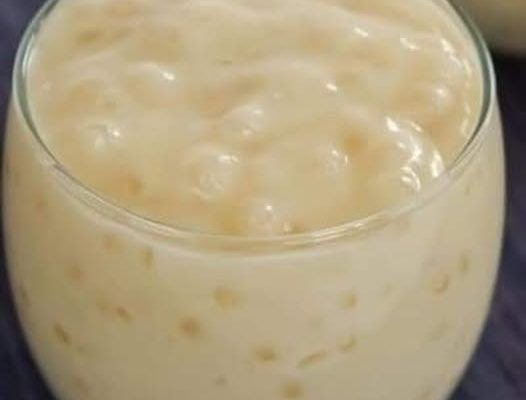Lost Recipe, Found Again: The Secret to Perfect Tapioca Pudding!
Losing a beloved family recipe can feel like losing a part of your heritage, especially when the dish holds sentimental value. Many of us have fond memories of certain foods that evoke comfort, love, and nostalgia. For me, tapioca pudding was one such dish. It was a recipe passed down from my mother, and it had always been a favorite in our household. When I lost her recipe, I felt like I had lost a small part of her.
Despite my best efforts, no other recipe I found could quite replicate the taste and texture of her version. There’s something deeply personal about a family recipe, often tweaked and perfected over the years, that can’t be matched by even the best cookbooks. The internet is full of similar-sounding recipes, but they always seemed to miss the mark, either too sweet or lacking the perfect creamy texture I remembered from my childhood.
My journey to recreate the perfect tapioca pudding became a personal mission. I tried many variations, adjusting the ingredients and cooking times, but nothing tasted exactly like hers. After years of experimenting and failing, I realized that perhaps the secret ingredient wasn’t just in the ingredients themselves but the memories they invoked.
Tapioca pudding is a deceptively simple dessert. It requires only a few ingredients: tapioca pearls, milk, eggs, sugar, and a pinch of salt. You can also add vanilla essence for extra flavor and garnish it with cinnamon or nutmeg. However, as simple as it may seem, the art of making the perfect pudding lies in the balance and method. The pearls need to be soaked beforehand to achieve that chewy texture that blends perfectly with the creamy mixture.
One trick I learned along the way is that soaking the pearls longer ensures a smoother, creamier pudding. When I made my mother’s version, she would always emphasize the importance of patience, allowing the tapioca pearls to soak for at least 30 minutes. Once the pearls are adequately soaked, they should be cooked slowly, allowing them to absorb the milk and blend with the sugar and eggs to form a rich pudding.
My favorite part of the process is when the pudding starts to thicken and the pearls turn translucent, signaling that the dish is almost ready. At that moment, the kitchen fills with a sweet, comforting aroma, and I’m transported back to my childhood, watching my mother stir the pot with love and care.
Though my attempts haven’t exactly replicated my mother’s recipe, I’ve found that this version is as close as I can get. And perhaps that’s enough. After all, food is more than just the ingredients—it’s about the memories and emotions tied to the dish. Now, when I make tapioca pudding, I’m not just feeding my body; I’m feeding my soul, reconnecting with my mother in a small, sweet way.
If you ever find yourself in a similar situation, searching for a lost recipe or trying to recreate a dish that holds sentimental value, my advice is to embrace the process. You might not get it right the first time—or even the hundredth time—but each attempt brings you closer to those memories and the people who made them special. And in the end, that’s what really matters.
Tapioca pudding, like many comfort foods, is about more than just taste. It’s about the love, care, and tradition that go into making it. Whether you’re following a recipe passed down through generations or creating your own version, every dish tells a story. And sometimes, the best recipes aren’t written down—they’re remembered in our hearts.






